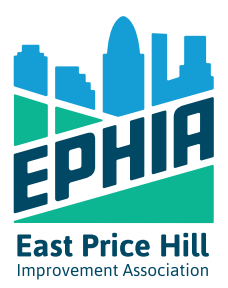Brandonnixon4council@yahoo.com
Elect Brandon Nixon for Cincinnati City Council on Facebook
Children are the future. Schools are a major reason for families to choose to move to one district over another. Considering Cincinnati Public Schools’ district report card, drop in number of gifted children, increase in Price Hill’s schools’ chronic absenteeism (up to 70%), and decrease in literacy rates (60% of students not on grade level), what should The City of Cincinnati be doing to support literacy and promote prioritization of education?
The City must partner with CPS, libraries, and nonprofits to expand after-school tutoring, literacy programs, and mentorship. Investing in safe routes to schools, technology access, and family engagement will reduce absenteeism. Prioritizing education through community partnerships ensures children in Price Hill and across Cincinnati have the foundation to succeed.
The city's development policies have divided the city and created two Cincinnati in terms of quality of life, city service expectations, investment, and development with the Westside clearly being the loser. What specific steps would you take to address that and how will improvement be measured?
Cincinnati cannot succeed with two standards of living. I will fight for equitable investment by prioritizing infrastructure upgrades, public safety, and parks on the Westside while encouraging new housing and small business growth through tax incentives and zoning reform. Developers must be held accountable for investing beyond core neighborhoods. Progress will be measured through neighborhood-level tracking of infrastructure spending, business openings, housing starts, and resident satisfaction surveys to ensure fair treatment and opportunity for all communities.
Many residents in Price Hill shop in Northern Kentucky, Delhi, Norwood, and Colerain. Residents with choice are choosing to move out of Cincinnati because of their experience in Price Hill. What can the city do to reverse that trend and become a neighborhood where people are attracted to visit or live?
The city must reinvest in Price Hill by improving safety, upgrading infrastructure, and supporting local businesses. Expanding housing options, restoring vacant properties, and creating vibrant community spaces will make the neighborhood more attractive. With stronger schools, amenities, and city services, Price Hill can retain families and draw new residents.
There are very few census tracts out of 120 census tracts that have experienced a reduction in area median income. Two of the four known census tracts that have a documented reduced area median income from 2010 to 2020 are in Price Hill. a) What does a reduction in area median income for a census tract mean to you? b) What is your idea of what a healthy area median income is and how should that look over time? c) What commitments will you make to specifically Price Hill to help promote opportunity and correct the downward trends? d) How will Price Hill residents see that you kept your commitment to desirable growth and positive improvements to quality of life?
Out of Cincinnati’s 120 census tracts, only four saw median incomes decline from 2010 to 2020—and two are in Price Hill. This is a warning sign of long-term disinvestment. To reverse the trend, the City must prioritize Price Hill with targeted job creation, small business support, housing rehabilitation, and infrastructure improvements. By directing resources where decline is deepest, we can restore economic opportunity, strengthen families, and make Price Hill a neighborhood where residents can thrive and newcomers want to live.






















